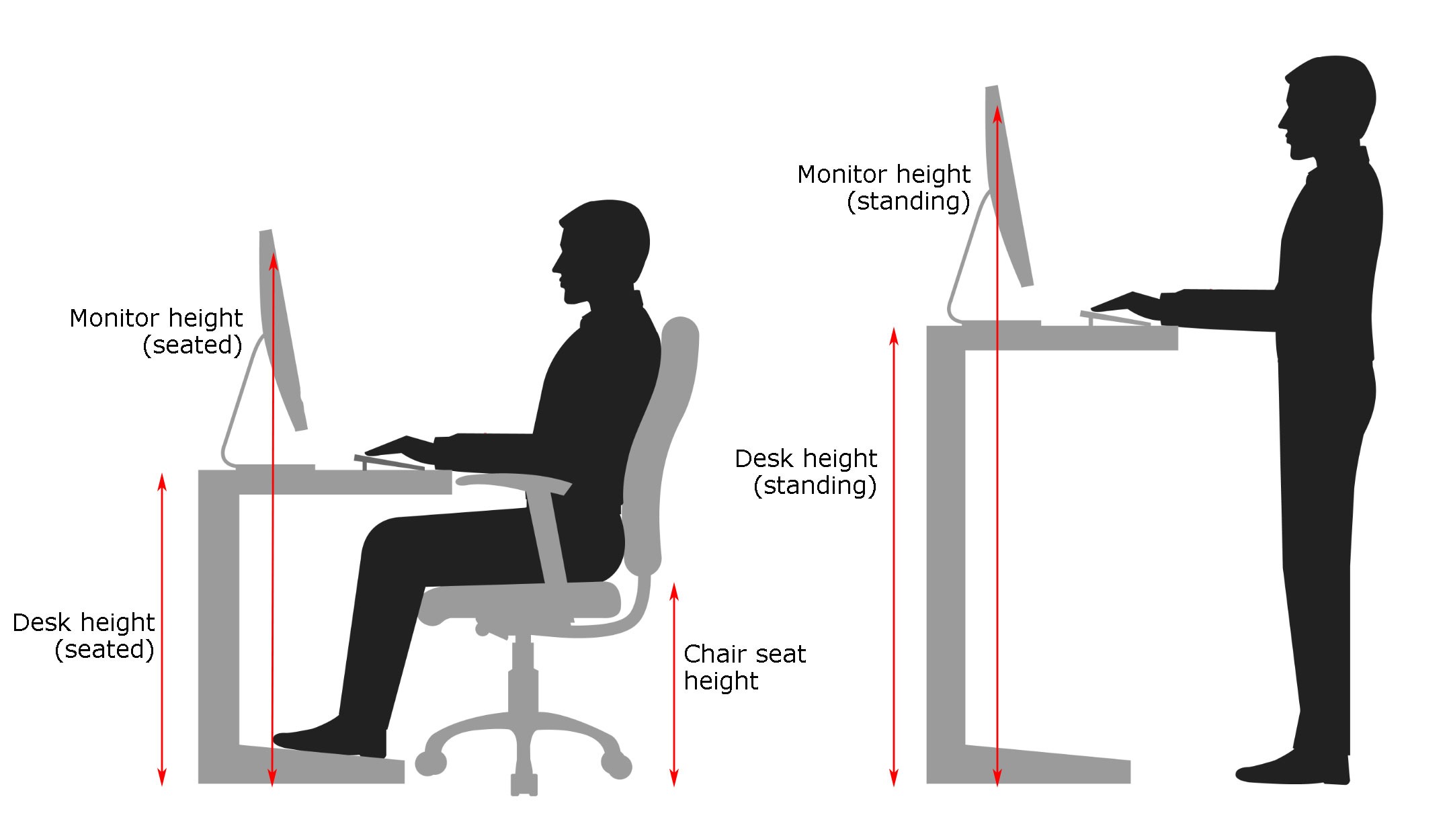Practical Guidance and Troubleshooting Desk Chair Height Issues: How Tall Should A Desk Chair Be

Finding the perfect desk chair height is crucial for comfort and productivity. A poorly adjusted chair can lead to back pain, neck strain, and reduced efficiency. This section provides practical steps to ensure your chair is set up correctly, along with solutions for common height-related problems.
Measuring Appropriate Desk Chair Height
Determining the ideal chair height involves a simple measurement process using readily available tools. You’ll need a measuring tape or ruler. First, sit in your chair with your feet flat on the floor and your thighs parallel to the ground. Imagine a perfectly straight line from your hip to your knee. Now, measure the distance from the floor to the top of your thigh, along this imaginary line. This measurement represents the ideal height of your chair’s seat. Add approximately 2 inches to this measurement to account for the thickness of the seat cushion. This final number is your target seat height. For instance, if the thigh-to-floor measurement is 18 inches, your ideal chair height would be approximately 20 inches. If your chair is adjustable, simply adjust the height lever until the seat reaches this measurement. If your chair is not adjustable, you’ll need to consider replacing it with an ergonomic model.
Common Desk Chair Height Problems and Solutions, How tall should a desk chair be
Understanding common issues related to desk chair height can prevent discomfort and improve your work experience. Here are some frequently encountered problems and their corresponding solutions:
- Problem: Feet don’t touch the floor. This forces your knees to bend at an unnatural angle, leading to discomfort and strain.
Solution: Use a footrest to elevate your feet to a comfortable position. Ensure the footrest allows your feet to rest flat and your knees to bend at a 90-degree angle or slightly less. Alternatively, consider a taller chair or a lower desk. - Problem: Thighs are too high or too low relative to the seat. This can cause pressure points, poor posture, and circulation issues.
Solution: Adjust the chair height. If the chair is non-adjustable, consider a replacement. If the problem persists even with height adjustments, check the chair’s lumbar support and consider adding a lumbar support pillow if needed. - Problem: Arms are not at the correct height relative to the desk. This can lead to shoulder and neck pain.
Solution: Adjust the armrests to a height that allows your elbows to rest comfortably at a 90-degree angle when typing. If the armrests are not adjustable, you might need to adjust your desk height or chair positioning. Consider removing the armrests if they are interfering with proper posture or desk use. - Problem: The chair lacks adequate lumbar support, causing back pain. This often compounds problems with incorrect chair height.
Solution: Add a lumbar support pillow or cushion to fill the gap between your lower back and the chair’s backrest. This provides essential support and promotes a healthy posture. Ensure the lumbar support correctly supports the natural curve of your spine.
